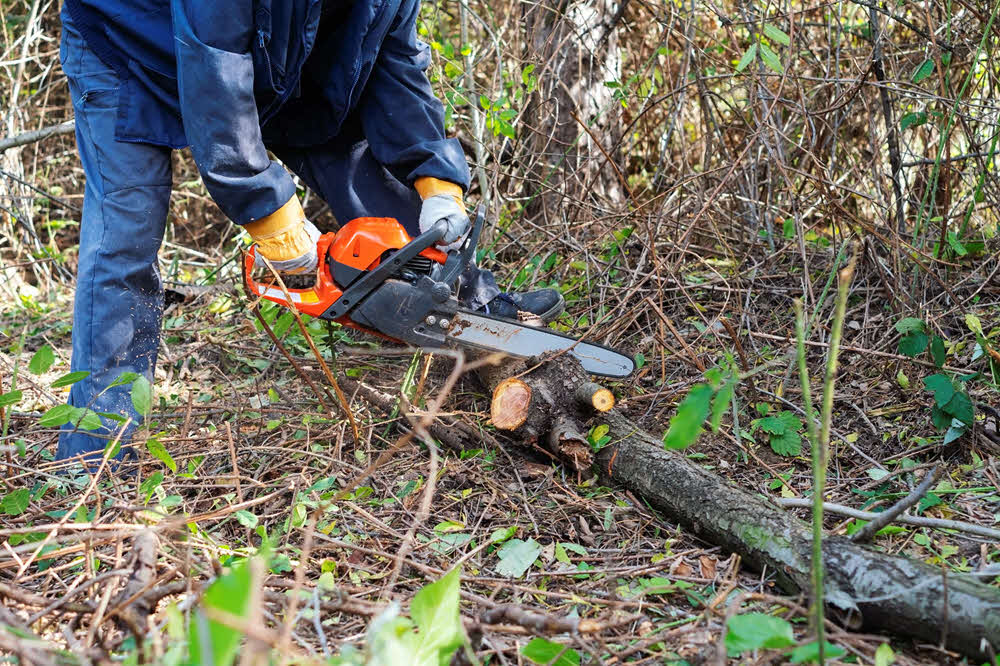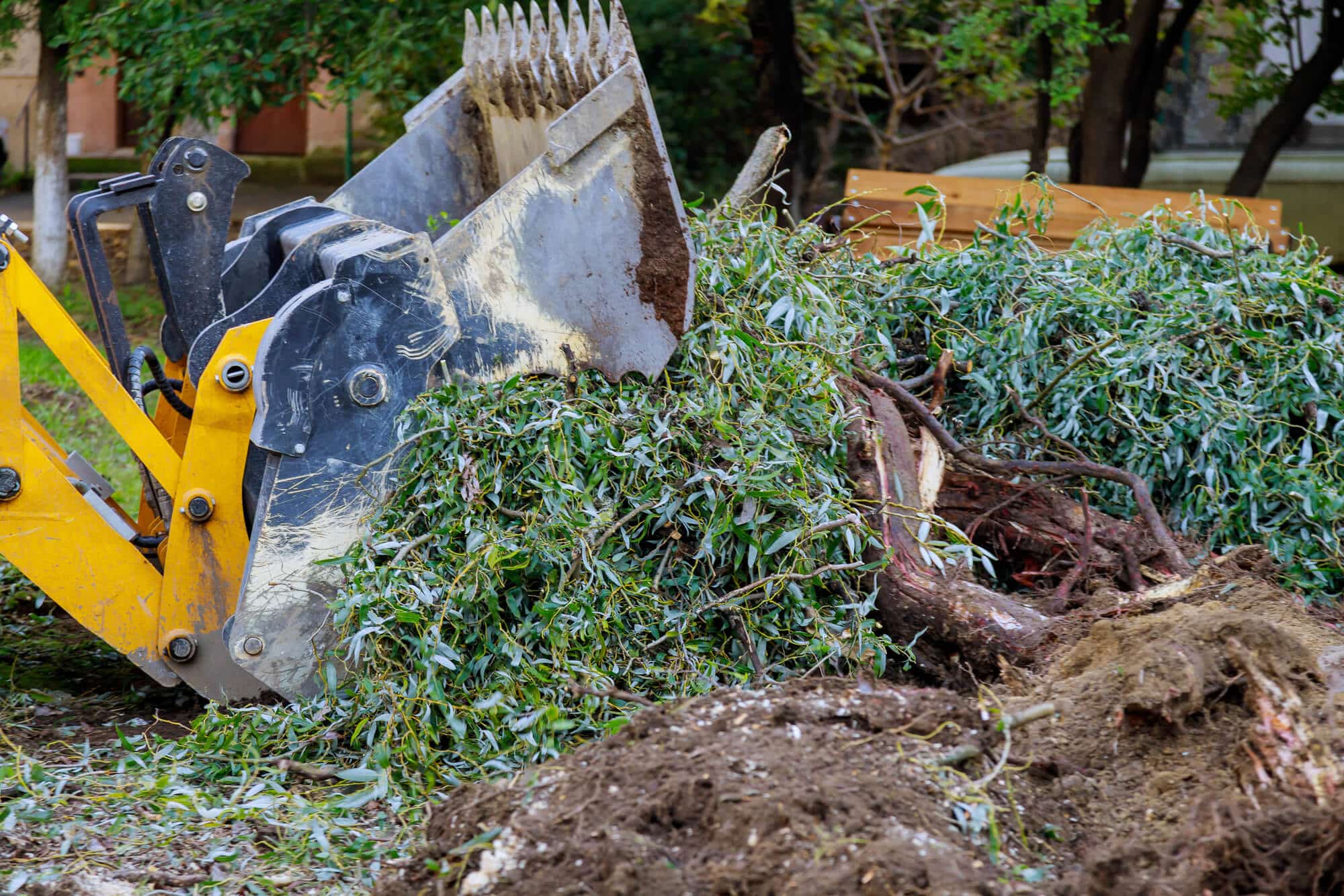Land Clearing Servicesin Madison Heights MI
Land Clearing Expertise to Ensure a Smooth Construction Process
We Are Locally Owned & Operated For Over 37 Years
Contact Us Today!
We Serve Businesses In And Around The Following Cities:
About Land Clearing Services
Introduction to Land Clearing Services in Madison Heights for Commercial Properties
Underscoring the vital service of maneuvering land into a usable state for commercial use, this comprehensive guide delves into the intricacies of Land Clearing Services with a specific focus on the city of Madison Heights. The transformational power of land clearing services not only revitalizes areas that have been neglected, but also fortifies the foundation for the growth of businesses, the community, and the city as a whole. Let’s embark on this elucidating journey together—unmasking what Land Clearing Services really entail, their numerous benefits, and practical real-world applications. Embedded in the guide are valuable insights and recommendations from seasoned industry experts, including D&J Contracting.
Understanding Land Clearing Services
Land Clearing Services encompass a range of operations aimed at making land viable for commercial use. Predominant among these services is the clearing of trees, stumps, debris, and potentially hazardous material from a given site. Skid steer land clearing or bobcat land clearing methods are often adopted, leveraging the agility of these machines. If the terrain is rough or uneven, grading and land clearing methods are deployed to level it, ensuring a solid foundation for any subsequent construction.
Benefits of Land Clearing Services
Effective land clearing and grading turns unusable land into a fertile ground for commercial possibilities. But the benefits are not just limited to creating a conducive environment for construction. Engaging a professional land clearing business like D&J Contracting offers safety and environmental advantages as well. By removing dead trees, hazardous waste, and unnecessary debris, land clearing promotes ecological balance while reducing the risk of fire outbreaks or other safety hazards. For businesses, it augments their land value, accelerates construction timeframes, and ultimately aids in the bottom-line growth.
Applications of Land Clearing Services
Madison Heights, with its progressive commercial landscape, sees diverse applications of land clearing. Commercial real estate developers often engage land clearing and grading companies like D&J Contracting for clearing acres of land for new building projects or clearing land for driveways. Clearing land for horses is another context where such services are sought. Considering Madison Height’s encouraging environment for startups, young companies clearing a lot to build a house or an office space is not uncommon.
More significant projects, say clearing land for development or for bigger structures, may often involve clearing land with a mini excavator. This machinery is particularly advantageous when dealing with larger debris and tree removals. Further, the advent of land clearing mulching services has demonstrated how businesses can put cleared debris to resourceful use, thereby coming full circle in its environmental responsibility.
Land Clearing Services: A Boon for Commercial Properties
Land clearing and grading have fundamentally revolutionized the way we perceive land development—more so in a bustling city such as Madison Heights, where every bit of usable land can contribute to the overall economic prosperity. However, the task is complex and requires a significant level of expertise and precision that professional land clearing companies like D&J Contracting can offer. Their vast experience in handling various projects—from clearing a lot for a house to more extensive commercial projects—demonstrates their, and for that matter such services’ essential role in shaping the urban commercial landscape.
As we reflect on the broad spectrum of benefits land clearing services present, they essentially converge to one powerful conclusion: environmentally responsible, efficient, and cost-effective land development. The transformation from unusable or hazardous land into valuable, safe commercial property inherently empowers businesses and contributes to a booming economy that is a win for all stakeholders, from individual residents to business owners, and the city at large.
Land Clearing Services Gallery


Call Us Today to receive your Free Quote for
Land Clearing Services in Madison Heights
Serving: Madison Heights, Michigan

About Madison Heights, Michigan
Originally part of Royal Oak Township, Madison Heights incorporated as a city by popular vote on January 17, 1955, and chartered on December 6 of that same year, becoming the tenth city government in southern Oakland County. At that time, the 7.2 square miles (18.6 km) city was one of the largest suburban communities in the Metro Detroit area. The first city hall was at 26305 John R Road, the former township offices. On April 5, 1963, a new municipal building was dedicated which is on the present location at 300 West Thirteen Mile Road. The city lies in the Interstate 696 (I-696) and I-75 corridor and is served by two primary school districts, Lamphere and Madison, as well as a full-service municipal government.
According to the United States Census Bureau, the city has a total area of 7.09 square miles (18.36 km), all land.
Although 91% of the buildings in Madison Heights are single-family homes or condominiums (approximately 9,800 residential property owners), 60% of the tax base is fueled by light industrial or commercial property. The city has 15 voting precincts, totaling more than 21,000 registered voters.
Madison Heights shares borders with Troy to the north, Royal Oak to the west, Hazel Park to the south, and Warren to the east. The eastern border of Madison Heights (Dequindre Road) is also the border between Oakland and Macomb counties.
There are more than 112 miles (180 km) of road within Madison Heights, of which the city maintains 105 miles (169 km), 95 miles (153 km) for snow removal, sweeping, and patching. Interstate 75 passes north to south on the west side of the city, and Interstate 696 is the major feature of its southern border. The junction of these two highways is shared with Royal Oak and Hazel Park on the southwest corner of Madison Heights.
| Census | Pop. | Note | %± |
|---|---|---|---|
| 1960 | 33,343 | — | |
| 1970 | 38,599 | 15.8% | |
| 1980 | 35,375 | −8.4% | |
| 1990 | 31,296 | −11.5% | |
| 2000 | 31,101 | −0.6% | |
| 2010 | 29,694 | −4.5% | |
| 2020 | 28,468 | −4.1% | |
| U.S. Decennial Census | |||
As of the 2020 United States census of 2020, there were 28,468 people and 13,487 households in the city. The population per square mile is 4,017.5.
The racial makeup of the city was 80.4% White, 7.8% African American, 0.2% Native American, 7.2% Asian, 0.1% Pacific Islander, 3.6% from two or more races. Hispanic or Latino residents of any race were 2.0% of the population.
There were 13,487 households, of which 14.7% spoke a language other than English at home. People under 65 years of age with a disability accounted for 11.1% of the city’s population, and 11.7% of the city’s population was living below the federal poverty line. Households without a broadband internet subscriptions made up 11.9% of the community.
16% of residents were under the age of 18; and 16.3% were 65 years of age or older. The gender makeup of the city was 49.4% male and 50.6% female.
As of the census of 2010, there were 29,694 people, 12,712 households, and 7,543 families residing in the city. The population density was 4,188.2 inhabitants per square mile (1,617.1/km). There were 13,685 housing units at an average density of 1,930.2 per square mile (745.3/km). The racial makeup of the city was 83.9% White, 6.4% African American, 0.5% Native American, 5.8% Asian, 0.1% Pacific Islander, 0.7% from other races, and 2.7% from two or more races. Hispanic or Latino residents of any race were 2.5% of the population.
There were 12,712 households, of which 27.5% had children under the age of 18 living with them, 41.0% were married couples living together, 12.9% had a female householder with no husband present, 5.4% had a male householder with no wife present, and 40.7% were non-families. 34.1% of all households were made up of individuals, and 11.8% had someone living alone who was 65 years of age or older. The average household size was 2.32 and the average family size was 3.02.
The median age in the city was 38.3 years. 20.4% of residents were under the age of 18; 8.7% were between the ages of 18 and 24; 30.4% were from 25 to 44; 26.6% were from 45 to 64; and 13.9% were 65 years of age or older. The gender makeup of the city was 49.1% male and 50.9% female.
As of the 2000 United States census, there were 31,101 people, 13,299 households, and 8,005 families residing in the city. The population density was 4,341.3 inhabitants per square mile (1,676.2/km). There were 13,623 housing units at an average density of 1,901.6 per square mile (734.2/km). The city’s racial makeup was 89.60% White, 1.82% African American, 0.44% Native American, 4.97% Asian, 0.03% Pacific Islander, 0.46% from other races, and 2.68% from two or more races. Hispanic or Latino residents of any race were 1.61% of the population.
There were 13,299 households, of which 26.9% had children under the age of 18 living with them, 45.2% were married couples living together, 10.5% had a female householder with no husband present, and 39.8% were non-families. 33.8% of all households were made up of individuals, and 12.3% had someone living alone who was 65 years of age or older. The average household size was 2.33 and the average family size was 3.02.
In the city, 22.1% of the population was under the age of 18, 8.1% was from 18 to 24, 35.4% from 25 to 44, 20.2% from 45 to 64, and 14.2% was 65 years of age or older. The median age was 36 years. For every 100 females, there were 95.8 males. For every 100 females age 18 and over, there were 92.9 males.
The city’s median household income was $42,326, and the median family income was $51,364. Males had a median income of $41,478 versus $29,345 for females. The city’s per capita income was $21,429. About 7.0% of families and 8.9% of the population were below the poverty line, including 10.8% of those under age 18 and 13.0% of those age 65 or over.
In 2008, 1.9% of the Madison Heights population were of Vietnamese descent. 168 Asian Mart, a 38,000-square-foot (3,500 m) supermarket, is the largest Asian supermarket in southeast Michigan, and one of the largest in the state. The Chinese Cultural Center is in Madison Heights.
The mayor of Madison Heights is Roslyn Grafstein, who was appointed as Mayor in August 2020 to fill a vacant seat.
Madison District Public Schools and Lamphere Public Schools have public schools serving Madison Heights.
Bishop Foley Catholic High School is a private school.
Four Corners Montessori Academy is a public charter school.
Call Us Today to receive your Free Quote for
Land Clearing Services in Madison Heights
Related Services in Madison Heights, Michigan
We Serve Businesses In The Following Zip Codes:
48007, 48015, 48021, 48026, 48035, 48036, 48038, 48042, 48043, 48044, 48045, 48046, 48047, 48048, 48050, 48051, 48066, 48071, 48080, 48081, 48082, 48083, 48084, 48085, 48088, 48089, 48090, 48091, 48092, 48093, 48098, 48099, 48225, 48230, 48236, 48310, 48311, 48312, 48313, 48314, 48315, 48316, 48317, 48318, 48397